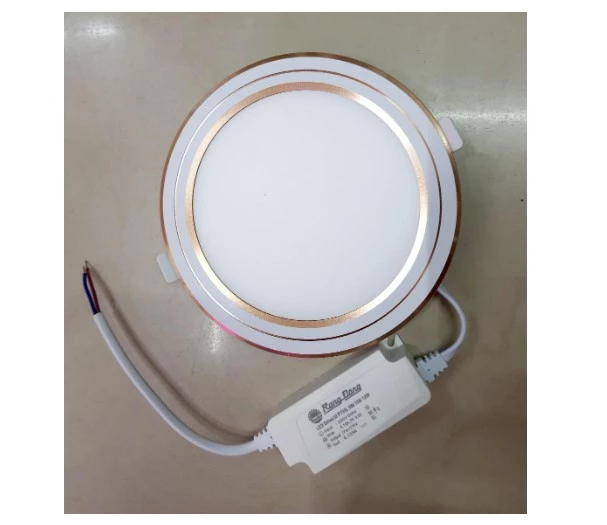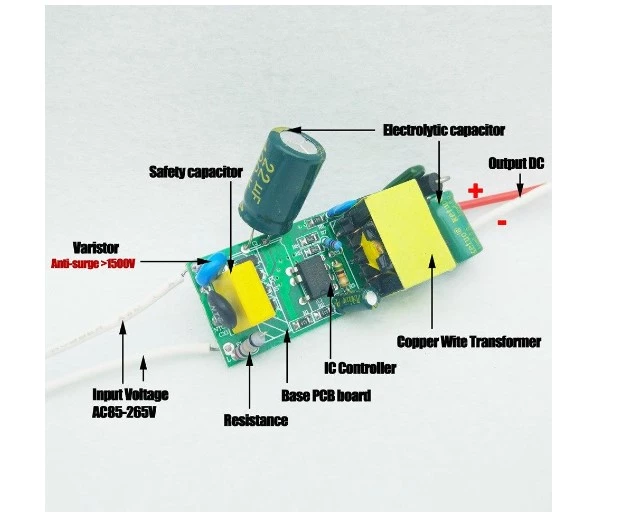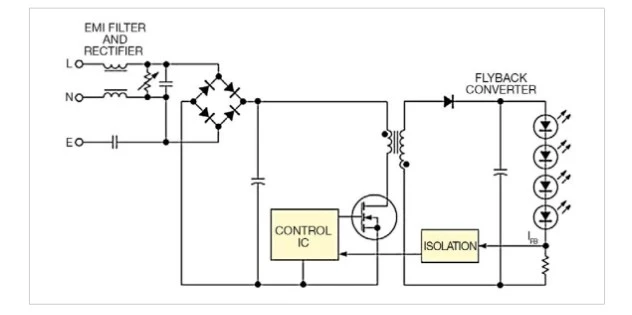
LED Driver - the power regulator for LED lights
In each LED lighting product, the LED driver is the module, including PCB and electronic components such as capacitor, resistor, transistor, inductor, etc. Designers also add surge protection circuit and electromagnetic filter to raise the reliability and functionality of an LED driver. In this article, we will look at general details of a typical LED driver for LED lights
What is an LED Driver?
LED driver is a closed circuit, used to control current and voltage provided to LED lights. It functions like a transformer of low-voltage lamps and ballast of fluorescent lamps.

A downlight with a separate LED driver.
LED Driver role
- LED driver plays an important role in LED light’s performance. It helps modulate the DC current for stable operation of LED lamps.
- Protects LED lights from a sudden pulse of voltage and current.
- Stabilizes LED light operation, therefore, increasing its lifetime.
- Modulates the heat of LED lamps.
- Solving the problems of low-voltage and high-voltage in the input and output.
LED Driver parts
In general, LED driver structure is relatively complex. The complexity depends on the type of LED lights. The driver does not only convert the AC current into DC current, but also protects and ensures the reliability of electromagnetism, lifetime, heat dissipation and so on. The main components required in a typical LED driver should be as follows.
- Diode: LED packages only enable DC current to pass through, and diode helps convert AC current to DC current.
- Transformer: The popular electricity grid uses 2-level voltage, 100V AC and 220V AC. A transformer will reduce this voltage down to the proper level for LED light requirement.
- IC and MOSFET: MOSFET and IC help create a DC pulse for the transformer. These two components are considered as the heart of a driver.

Parts of a LED driver are shown in the photo above.
- Noise filter: After being released from MOSFET, the DC pulse will be filtered by noise filter to prevent noise caused by MOSFET’s transient.
- Driver filter: This component protects the current feedback.
- Fuse: It can help shut down the circuit immediately, protecting the driver from risks.
- Anti-surge capacitor: It prevents the surge impact during operation and components under harsh conditions.
- High-voltage filter: They can filter noise in the condition of high voltage. This can increase the reliability of the LED driver.
- Printed circuit board (PCB): This is a board in which electric lines are inside the board, surface-mounted components are attached on the surface of the board, and the through-hole components are soldered on the holes of the board. These components are distributed in a proper layout under proper principle to drive LED packages.
Typical types of LED drivers
Driver using resistor to drop voltage
This is the most basic LED driver. Its operation is based on the principle of dropping voltage by using a resistor. However, this kind of driver is rarely used nowadays due to its poor performance, especially for modern LED luminaires like downlights, surface-mounted ceiling lights, etc.
Constant-current driver
This driver uses IC to convert AC current into a constant DC current, driving the LED packages to work stably. This driver is better than a resistor-use driver.

Principle of the fly-back driver.
Constant-voltage driver
This type of driver is quite popular and often chosen by designers owing to its reasonable price. It can convert the 220V AC into a constant DC voltage so that LED lights can work stably.
Dimmable driver
In general, the dimmable driver is the most modern driver among the current types. It uses potentiometer to dim the LED lamp intensity as desired. It is applied in various modern lighting systems.
Should you have any questions or request a quotation of Rang Dong products, please send us an email to: export@rangdong.com.vn.
Websites: en.rangdong.com.vn and vacuumflask.rangdong.com.vn








